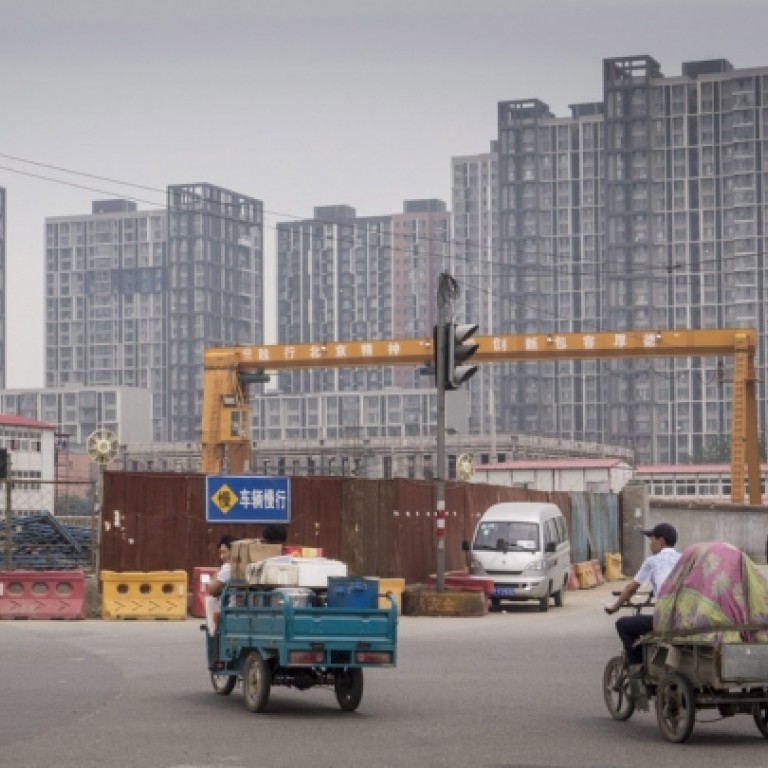
Urbanisation not the cure-all China's leaders are hoping for
Rising household incomes are touted, but construction expectations may be built on shaky ground and it's no sure bet moved farmers will benefit
Any conversation about China these days rapidly turns into a discussion about the economic promise of urbanisation.
Urbanisation is not just the centrepiece of new Premier Li Keqiang's economic policies. According to enthusiasts, it is the engine that will power China's future development, justifying sky-high investment levels, and even propelling a long-sought switch to a more sustainable consumption-driven growth model.
Believers in the potential of urbanisation point out that today only just over half of China's population lives in cities. If that proportion were to rise over the next couple of decades to 75 per cent, in line with the rich world's levels, they reckon 300 million people - equivalent to the entire population of the United States - will have to migrate from the countryside to the cities.
To accommodate them, China would have to build a new city the size of Shanghai every year for the next 20 years. That would entail massive investment in housing and infrastructure, supporting everything from commodity to property prices.
What's more, argue the enthusiasts, because city-dwellers earn more than their country cousins, urbanisation will boost consumer demand, accelerating China's economic rebalancing.
That, at least, is the idea. Unfortunately, however, there are signs China's urbanisation is not the economic cure-all its proponents expect.
For one thing, urbanisation doesn't necessarily involve mass migration. In fact, it needn't even require much new building. In many cases, urbanisation will simply involve the reclassification of areas that have already been developed but that are still designated as rural. That might help officials meet their targets, but by itself it will do nothing to boost the economy.
Of course, urbanisation frequently does involve construction, for example when farmers are moved off their land and into apartments in newly built tower blocks. But the economic benefits are dubious. Often the urbanisation process is simply an excuse to enable officials to seize village land, which they can then sell on at a handsome profit.
The displaced farmers are supposed to receive compensation, but if the loss of their land leaves them without a regular income, the urbanisation process will leave them worse off, not richer.
Aware of the difficulty, officials have suggested a number of proposals aimed at solving the problem. Under one, former farmers would be compensated with an annual income stream. In effect, they would be handed a bond that would pay a coupon related to the value of their former land.
It sounds like a good idea, but the precedents are not encouraging. During land reform in Japan in the late 1940s, dispossessed farmers were compensated with 30-year bonds paying a coupon of 3.6 per cent.
Unfortunately, the valuations placed on redistributed farmland were artificially low. Meanwhile, high inflation rapidly eroded the real value of the cash flow generated by the bonds. As a result, millions lost out.
This doesn't doom Li's urbanisation plans to failure. One of the main strands of the policy is to reform China's household registration system, which designates families as either rural or urban. By gradually removing the distinction, Beijing hopes to extend to rural families and migrants the health insurance, job protection and access to education and housing that registered city dwellers already enjoy.
The idea is that if they get access to these social welfare benefits, rural households will no longer feel compelled to save so much of their incomes as a precaution against future hard times. Household spending will pick up, and China's economy will rebalance.
It's a nice theory. But things may not work out quite so neatly. It's true that China's national savings rate - total savings as a share of gross domestic product - is high. But it does not follow that China's consumers are unusually thrifty. In reality, the household savings rate - families' savings as a proportion of their income - is comparable to rates in other Asian economies.
The real reason consumer spending is so feeble at just 36 per cent of GDP is that household incomes are low relative to overall output. Equally, savings are high because so much of China's national income is retained by the state and corporate sectors.
So urbanisation and reform are only likely to succeed if they are accompanied by a deliberate policy to raise household incomes by shifting more wealth away from the state and companies and into consumers' pockets.
To achieve that, however, will mean directly challenging some of China's most powerful entrenched interests.
Urbanisation won't succeed in its core objectives without a fight.

